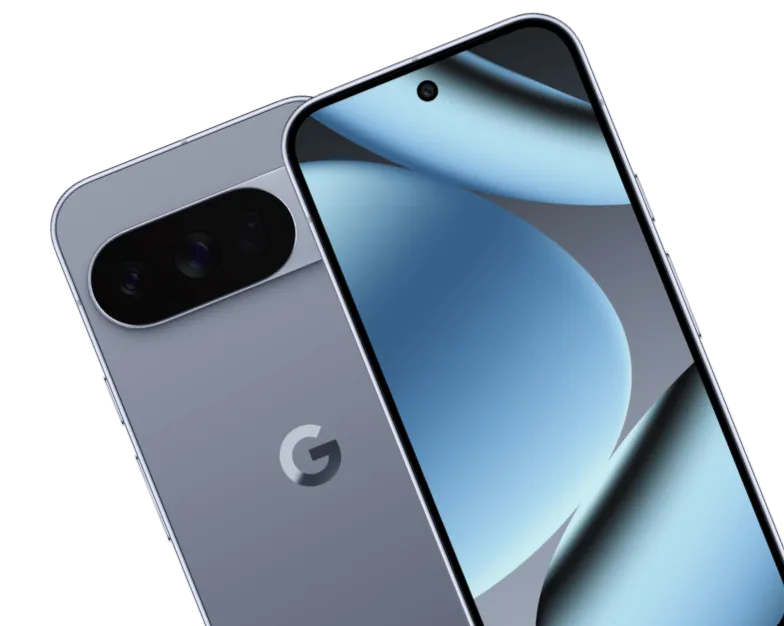Stuck between the Pixel 10 Pro and Pixel 9 Pro? You’re choosing between two excellent phones that look similar on the outside but differ in a few everyday ways. This guide breaks the decision into clear steps so you can match the right phone to what you actually care about—price, screen comfort, battery, camera, and how long you plan to keep it.
Follow each step, make a quick note, and by the end you’ll have a confident yes/no for each model. No jargon. Just practical, real‑world checks you can use in a store or online.
Step 1 — Set your budget and timing
Decide what you’re willing to spend and when you want to buy. Both phones launched at a similar base price (around $999), but timing changes value. The Pixel 10 Pro may include preorder bonuses (like gift cards or bundles), while the Pixel 9 Pro often sees bigger discounts after the new model lands. You’re on track if you’ve set a “buy now” price and a “wait for a sale” price and know how long you’re willing to wait.
- Buy the Pixel 10 Pro if a preorder bonus or strong trade‑in drops your out‑of‑pocket cost to your target.
- Buy the Pixel 9 Pro if you see a meaningful discount (ideally triple‑digit savings) from a trusted seller.
- Always check return windows (14–30 days) so you can test and swap if needed.
Step 2 — List your “must-haves” before you compare
Write the 3 things that matter most to you (in order). Common picks: camera quality, battery life, screen comfort outdoors, wireless charging style, or how long the phone will get updates. This protects you from being swayed by specs you don’t actually use. You’re on track if your top three are written, ranked, and you can say why each one matters day to day.
- Example priorities: “Bright screen for sun, long battery, magnets for car mount.”
- If gaming is a priority, add “sustained performance” to your list.
Step 3 — Check screen comfort and outdoor visibility
Prioritize how the display feels to your eyes. Both phones use a 6.3-inch 120 Hz OLED panel with the same sharp resolution. The Pixel 10 Pro gets a brighter peak (up to about 3300 nits vs ~3000 nits on the 9 Pro), which helps in direct sun. Many users also report improved flicker behavior on the 10 Pro, which may matter if you’re sensitive to eye strain. You’re on track if you’ve tried auto-brightness near a window or outdoors and noted which one stays easier to read and more comfortable.
- If you work outside a lot or struggle in bright light, lean Pixel 10 Pro for the extra brightness.
- If both feel fine to your eyes indoors and out, mark this category a tie.
Step 4 — Weigh performance and years of support
Decide how long you plan to keep the phone. The Pixel 10 Pro uses Google’s newer chip (Tensor G5) built for better efficiency and AI features, while the 9 Pro runs the prior-generation Tensor G4. Both have plenty of RAM for multitasking. The big difference: the 10 Pro launched a year later, so it gets one extra year of software support. You’re on track if you can answer: “Will I keep this 4–5+ years?” If yes, that extra year and newer chip favor the 10 Pro.
- Heavy multitaskers and on-device AI fans: choose Pixel 10 Pro.
- Light users who upgrade more often: Pixel 9 Pro can be the better value on sale.
Step 5 — Match battery life and charging to your routine
Think about how and where you charge. The Pixel 10 Pro adds a slightly larger battery (about 4870 mAh vs ~4700 mAh) and bumps wired charging to around 30W. It also supports Qi2 magnetic wireless charging (great for snap-on stands and car mounts). The 9 Pro supports standard Qi and can reach faster wireless speeds with Google’s own stand, but without magnets. You’re on track if you’ve picked the charging style you’ll use most—snap-on magnets, a standard pad, or quick top-ups by cable.
- Use magnetic chargers or car mounts? Go Pixel 10 Pro (Qi2 with magnets).
- Already own Google’s Pixel Stand and love it? Pixel 9 Pro remains a solid match.
- If you rely on cables, both are fine; the 10 Pro is a touch faster.

Step 6 — Be honest about your camera needs
Both phones share a similar triple-camera setup (wide, ultrawide, and 5x telephoto) that’s already excellent. The Pixel 10 Pro leans into new AI tools (like camera coaching and smarter assist features) rather than new lenses. If you mostly shoot people, pets, travel, and low light, you’ll be happy with either; if you want the latest AI photo tricks and refinements, the 10 Pro has the edge. You’re on track if you’ve looked at a few sample photos and can live without chasing spec changes.
- Prefer tried-and-true results and don’t need new AI extras? Pixel 9 Pro is great.
- Want guided shooting and the newest computational tweaks? Choose Pixel 10 Pro.
Step 7 — Confirm SIM, travel, and connectivity needs
Check how you use your line(s). In some regions, the Pixel 10 Pro may be eSIM‑only, while the 9 Pro includes a physical SIM tray in many variants. If you swap SIM cards when traveling or rely on a physical SIM for work, verify the exact model sold in your country. Both phones offer modern Wi‑Fi and Bluetooth, NFC, and IP68 water/dust resistance. You’re on track if you’ve confirmed a model that matches your carrier, travel plans, and SIM preference before you buy.
- Need a physical SIM? Double‑check the 10 Pro in your region before committing.
- Primarily use eSIM or one carrier? Either model works.
Step 8 — Handle both phones for comfort and weight
Comfort matters more than you think. The phones are the same size, but the Pixel 10 Pro is a little thicker and heavier (about 207 g vs ~199 g). Try one‑hand use, pocket feel, and reach to the top of the screen. Also check color options you’ll enjoy seeing daily (the 10 Pro adds fresh shades like Jade and Moonstone). You’re on track if one clearly feels more secure in hand and you’ve noted your favorite finish.
- If grip and lightness are top priorities, the 9 Pro’s slightly lower weight may feel nicer.
- If magnets and brighter screen matter more, the 10 Pro’s small weight bump is worth it.
Step 9 — Use your current phone as the tie-breaker
Let your starting point guide the jump. Coming from an older device (Pixel 6/7/8 or similar)? The Pixel 10 Pro’s newer chip, brighter screen, and magnets are easy wins if the price is close. Already on a Pixel 9 Pro? You’ll notice fewer differences—upgrade mainly if you want Qi2 magnets, the brighter panel, and extra year of updates, or you get a great trade‑in. You’re on track if this step makes your decision feel obvious based on where you’re coming from.
- From older phones: prioritize Pixel 10 Pro unless the 9 Pro is much cheaper.
- From Pixel 9 Pro: stay put unless a deal or specific 10 Pro feature solves a real pain.
Step 10 — Plan your purchase and test week
Buy with a clear test plan and a return window. Back up your old phone, then use the new one for a full week like normal: charge the same way, take night and portrait shots, stream outdoors in bright light, and note any heat or eye strain. If anything bugs you, return or swap within the window. You’re on track if your notes say “no deal‑breakers” by day 5.
- Day 1–2: set up, migrate data, try your everyday apps.
- Day 3–4: battery/charging tests (your car mount, your bedside stand, your cable).
- Day 5–7: camera checks in daylight, low light, and at 5x zoom; outdoor screen check.
Tips
- Compare trade‑in values from multiple retailers; some include bonus credits or gift cards.
- If you’re sensitive to display flicker, try both screens at low brightness in person before buying.
- Plan your SIM move: eSIM transfers can take a few minutes—do it on Wi‑Fi with your old phone handy.
- Think accessories: if you want snap‑on wallets, stands, or car mounts, the Pixel 10 Pro’s Qi2 magnets are a plus.
- Don’t buy for benchmarks alone—judge smoothness, heat, battery, and camera results in your own use.
Warnings
- Model differences vary by region (e.g., eSIM‑only vs. physical SIM). Confirm specs for your exact country/carrier before checkout.
- Wireless charging speeds depend on the charger. Magnetic convenience (Qi2) doesn’t always mean faster charging.
- Battery life claims are estimates. Your apps, signal, and habits can change results significantly.
Make the call that fits your life, not just a spec sheet. When your top three needs are met and the price feels right, you’ve found your phone.

